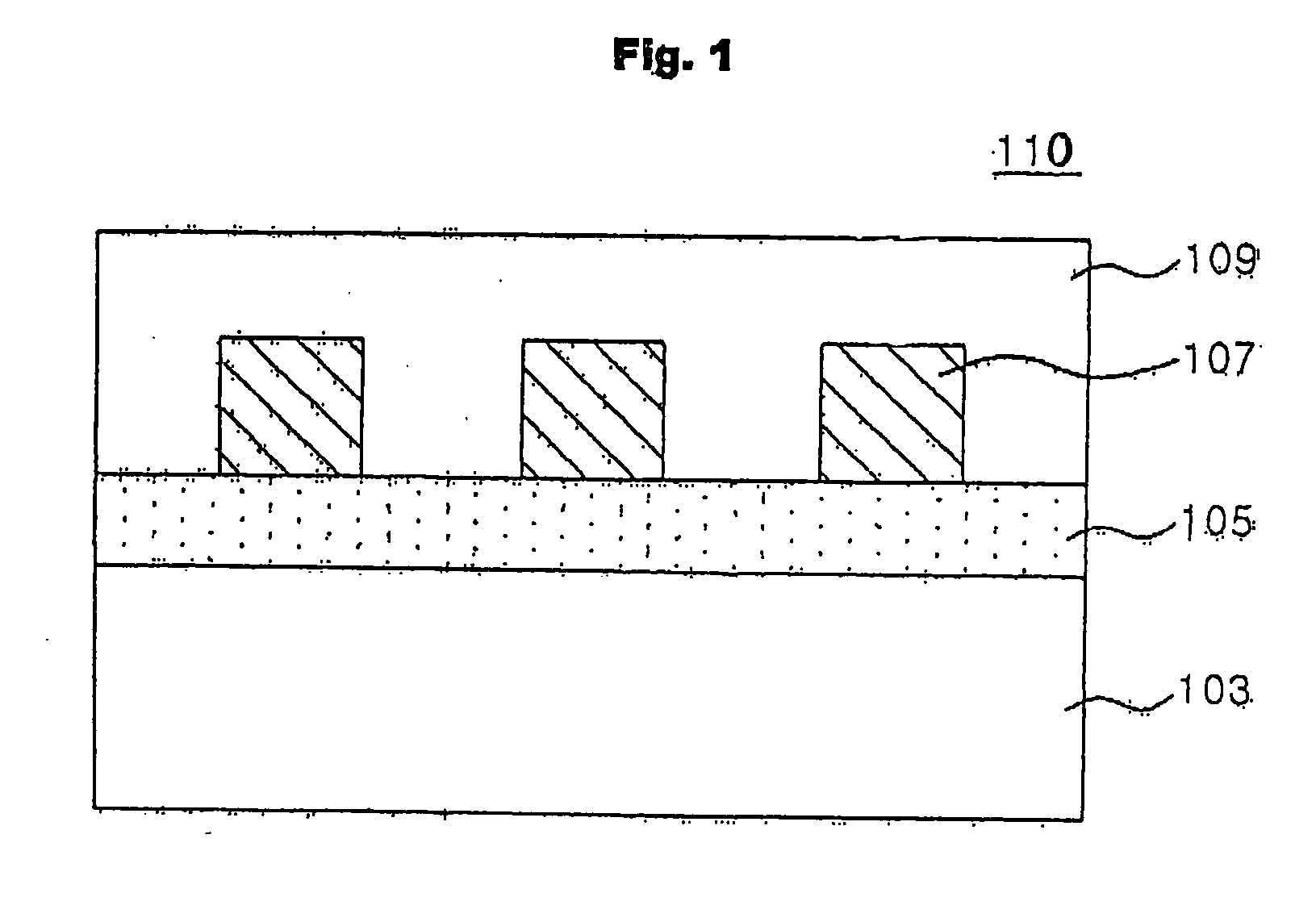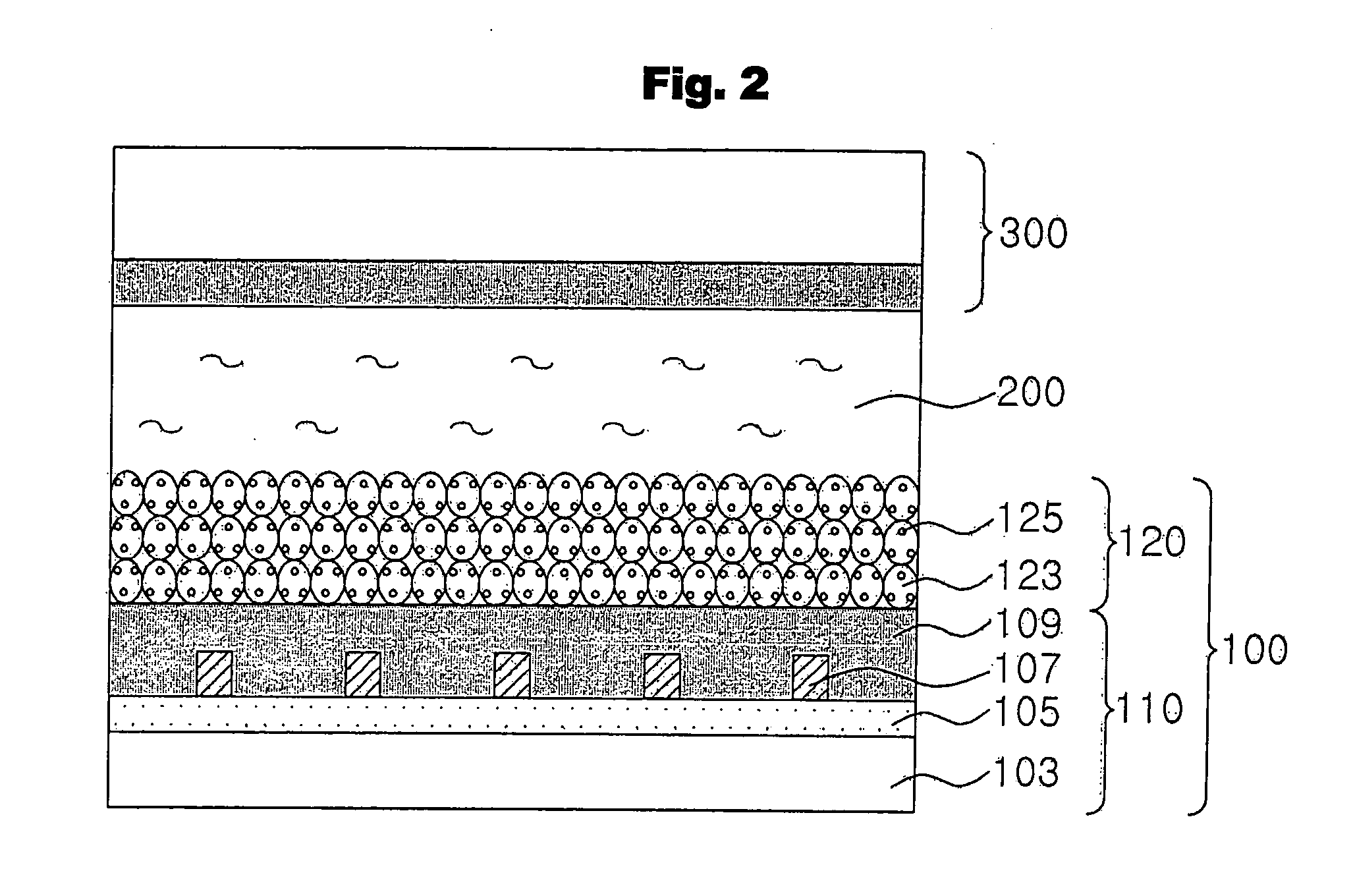Transparent electrode for solar cells, manufacturing method thereof, and semiconductor electrode comprising the same
a technology of solar cells and semiconductor electrodes, which is applied in the manufacture of final products, sustainable manufacturing/processing, electrolytic capacitors, etc., can solve the problems of impeded electron migration, high manufacturing cost, and only limited improvement in energy conversion efficiency, and achieve low electrical resistance characteristics, good uv blocking performance, and high transmittance.
- Summary
- Abstract
- Description
- Claims
- Application Information
AI Technical Summary
Benefits of technology
Problems solved by technology
Method used
Image
Examples
example 1
[0067] An isopropanol solution of polybutyl titanate (5.0 wt %) was applied on a transparent polyethylene sulfone (PES) by spin coating at 2000 revolutions per minute (rpm) and dried on a hot plate at 100° C. for 3 minutes, thus forming a photocatalytic layer having a thickness of about 50 nm. 10 grams (g) of polyvinyl alcohol (a molecular weight of 6000), 12 g of citric acid, 1.0 ml of triethanolamine and 15 ml of isopropyl alcohol were dissolved in 200 ml of distilled water, and the solution was spin-coated on the photocatalytic layer at 2000 rpm and dried on a hot plate at 100° C. for 5 minutes, thus forming a water-soluble polymer layer having a thickness of about 200 nm. The resulting substrate having the photocatalytic layer formed thereon was irradiated with 500 W of ultraviolet light having a broad wavelength range by means of a UV exposure system (Oriel Co. USA) through a photomask having fine patterns formed thereon. After exposure to light, the substrate was immersed in a...
PUM
 Login to View More
Login to View More Abstract
Description
Claims
Application Information
 Login to View More
Login to View More - R&D
- Intellectual Property
- Life Sciences
- Materials
- Tech Scout
- Unparalleled Data Quality
- Higher Quality Content
- 60% Fewer Hallucinations
Browse by: Latest US Patents, China's latest patents, Technical Efficacy Thesaurus, Application Domain, Technology Topic, Popular Technical Reports.
© 2025 PatSnap. All rights reserved.Legal|Privacy policy|Modern Slavery Act Transparency Statement|Sitemap|About US| Contact US: help@patsnap.com



